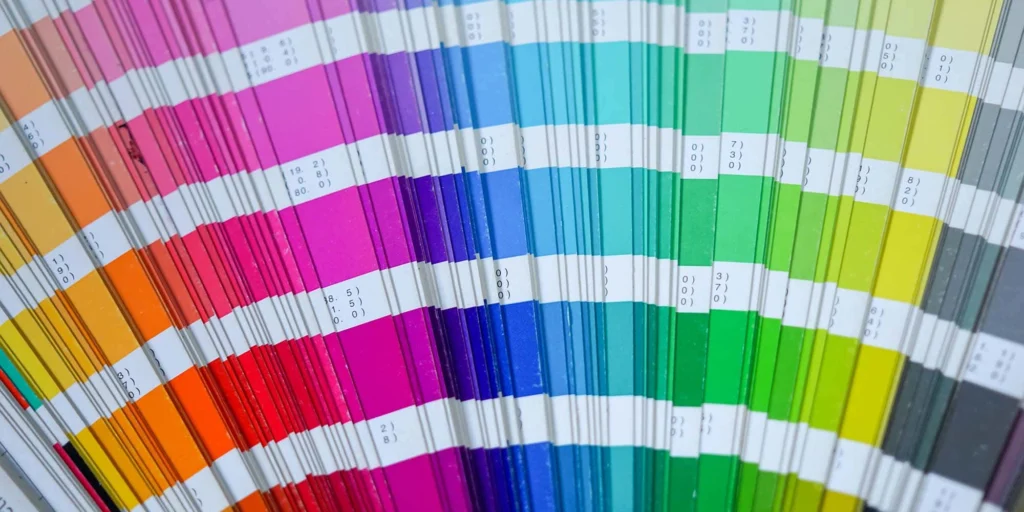Have you ever wondered how printers create such vibrant and colorful images on paper? If you've heard the term CMYK but aren't quite sure what it means, you're in the right place! In this article, we'll dive into the world of CMYK printing and uncover the secrets behind this essential process.

Understanding CMYK: Breaking Down the Basics
Let's Start with the Acronyms
CMYK stands for Cyan, Magenta, Yellow, and Key (Black). But what do these colors have to do with printing? Let's unravel the mystery together and understand how these four colors work together to create stunning prints.

How Does CMYK Printing Work?
The Magic of Color Mixing
Imagine you're an artist with a palette of colors. Just like mixing paints on a canvas, CMYK printing involves combining varying percentages of cyan, magenta, yellow, and black inks to produce a spectrum of colors. Learn how this color mixing process unfolds in the world of printing.
The Role of Each Color: Cyan, Magenta, Yellow, and Black
Meet the Players
Each color in the CMYK lineup plays a crucial role in the printing process. Discover the unique characteristics of cyan, magenta, yellow, and black inks and how they contribute to creating vivid and lifelike prints.
From Digital to Physical: How CMYK Transforms Pixels into Prints
From Screen to Page
Ever wondered how digital images make their way onto physical paper? Explore the journey of digital files through the CMYK printing process and witness the transformation from pixels to stunning printed images.

CMYK vs. RGB: Understanding the Key Differences
Decoding the Color Codes
CMYK and RGB are two common color models used in digital and print media. Delve into the differences between these color models and understand when each is used, whether you're designing for the web or preparing files for print.
| Aspect | CMYK | RGB |
|---|---|---|
| Definition | Cyan, Magenta, Yellow, Key (Black) | Red, Green, Blue |
| Color Model | Subtractive | Additive |
| Usage | Printing on physical surfaces | Digital displays (screens, monitors) |
| Primary Colors | Cyan, Magenta, Yellow, Black | Red, Green, Blue |
| Color Mixing | Overlapping transparent inks | Combining light in varying intensities |
| Color Range | Limited range, suitable for print media | Wide range, suitable for digital media |
| File Format | Used for printing files (e.g., PDF, TIFF) | Used for digital files (e.g., JPEG, PNG) |
| Example Devices | Printers, offset presses | Computer monitors, TVs, smartphones |

Common Applications of CMYK Printing
Where Can You Find CMYK in Action?
CMYK printing is everywhere, from posters and flyers to magazines and packaging. Explore the wide range of applications for CMYK printing and discover how it brings color to our everyday lives.

Choosing the Right Printing Method for Your Project
Making Informed Decisions
When it comes to printing, one size doesn't fit all. Learn how to choose the right printing method for your project, whether it's offset printing, digital printing, or other specialized techniques, to achieve the best results.
Tips for Optimizing Your Designs for CMYK Printing
Getting the Best Results
Designing for CMYK printing requires attention to detail and understanding how colors translate from screen to print. Uncover essential tips and tricks for optimizing your designs to ensure they look their best in print.

Troubleshooting Common CMYK Printing Issues
Overcoming Challenges
Printing isn't always smooth sailing. Explore common issues that arise during CMYK printing, such as color inconsistency, banding, and registration errors, and learn how to troubleshoot them effectively.
Conclusion
In conclusion, CMYK printing is a fascinating process that brings color to life on paper. By understanding the basics of CMYK and how it works, you'll be better equipped to create stunning prints that captivate and inspire.
FAQs about CMYK Printing
- What is CMYK and how does it differ from RGB? CMYK stands for Cyan, Magenta, Yellow, and Key (Black) and is a color model used in printing. RGB, on the other hand, stands for Red, Green, and Blue and is used in digital displays. CMYK is subtractive, while RGB is additive.
- Why is black referred to as the 'Key' color in CMYK? Black is referred to as the 'Key' color in CMYK because it is the primary color used in printing text and line art. Using black ink for these elements ensures crisp and sharp results.
- Can I use RGB images for CMYK printing? While it's possible to use RGB images for CMYK printing, it's recommended to convert them to CMYK format before printing to ensure accurate color reproduction. RGB images may appear differently when printed in CMYK.
- What is the difference between spot color and CMYK printing? Spot color printing involves using premixed ink colors to achieve specific hues, while CMYK printing utilizes a combination of cyan, magenta, yellow, and black inks to create a wide range of colors. Spot color printing is ideal for projects requiring precise color matching.
- How can I ensure color accuracy in CMYK printing? To ensure color accuracy in CMYK printing, it's essential to calibrate your monitor, use color management tools, and work with a reputable printing service provider. Additionally, requesting color proofs before printing can help identify any discrepancies.





